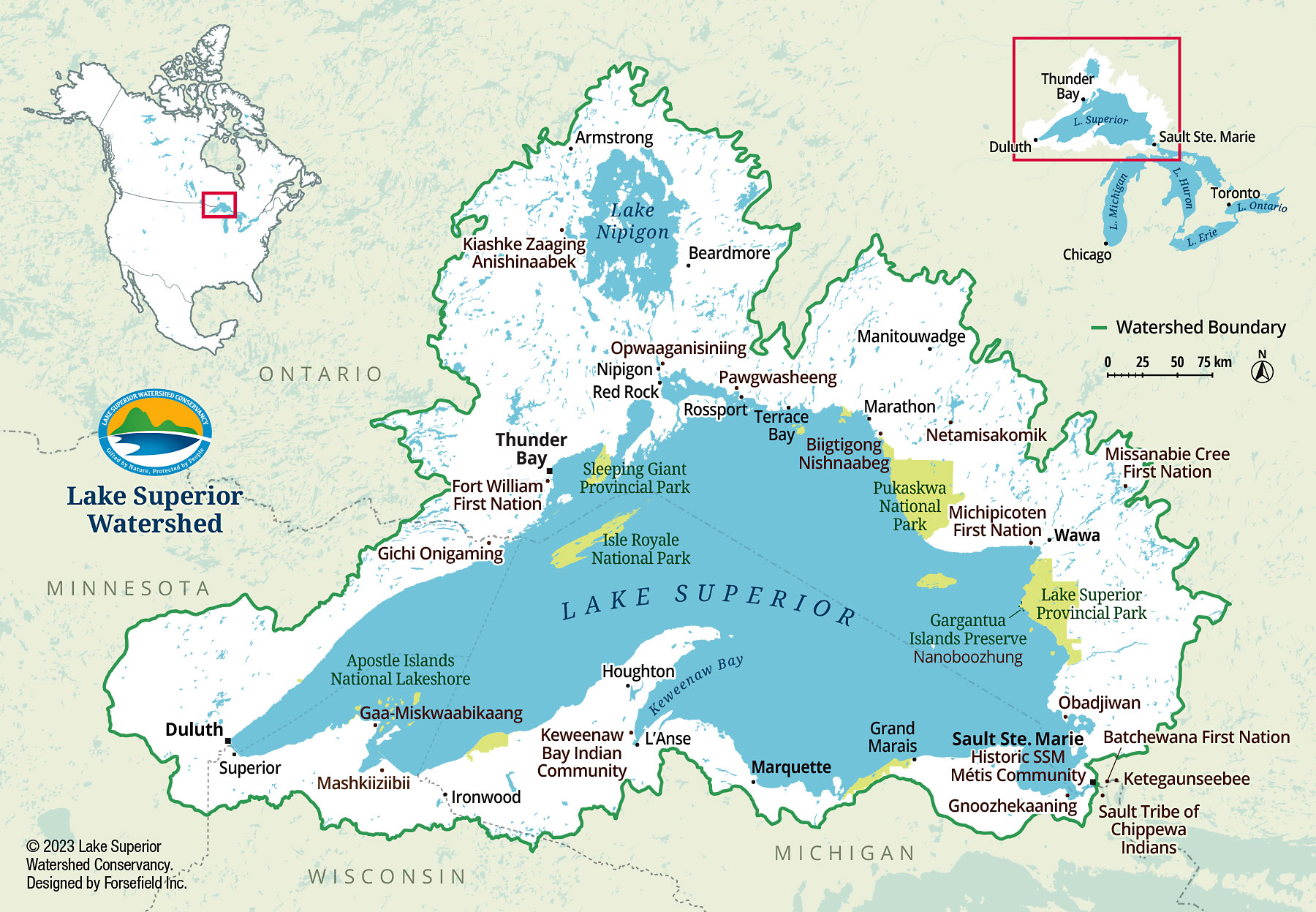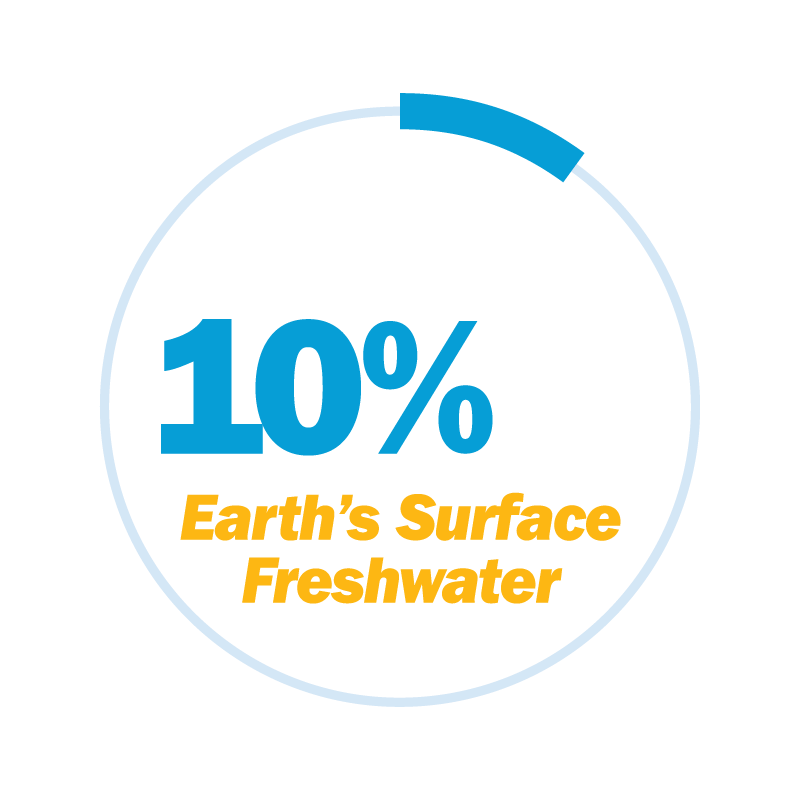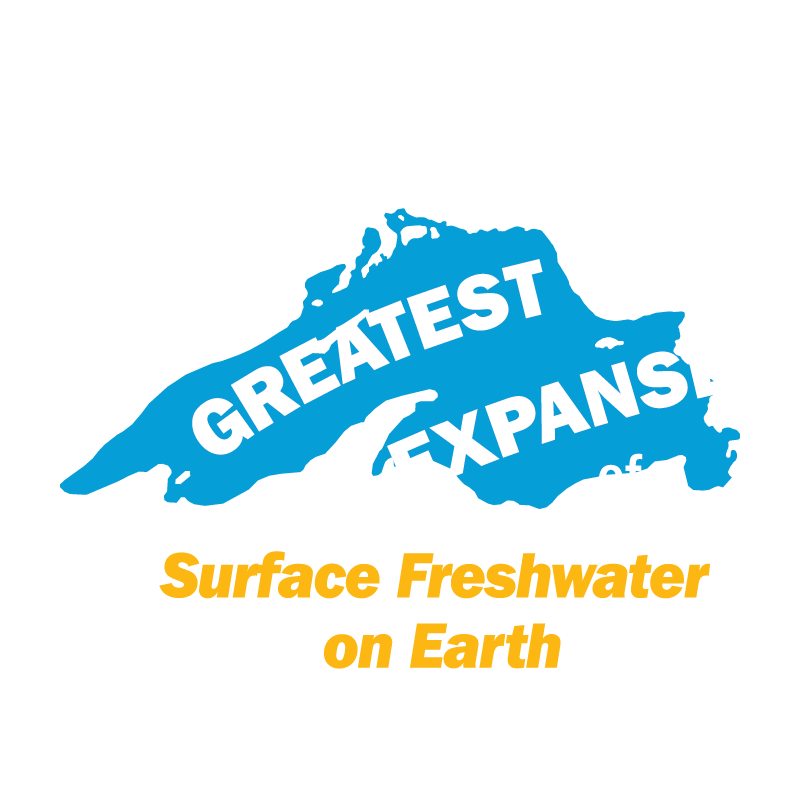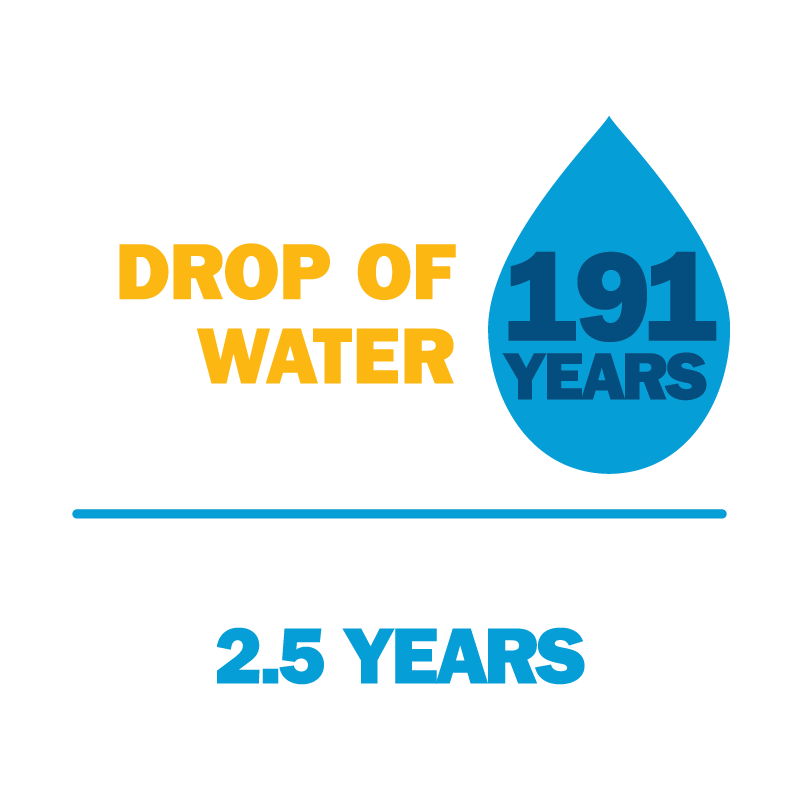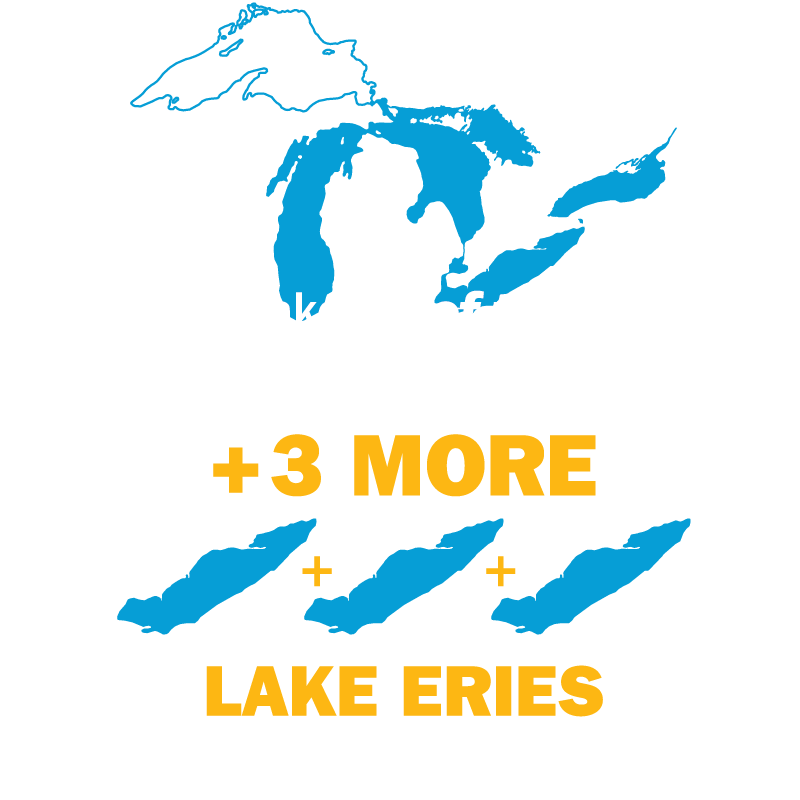The Lake and Watershed
Lake Superior is immense. It’s the largest expanse of freshwater on the planet. Often referred to as an inland sea, it has served as a travel corridor for millenia. It takes roughly 3 months to circle the Lake by canoe. Or 30 days to bicycle the 1,300 mile (2,900 km) road route known as the Lake Superior Circle Tour. By car, the journey takes only 3 days but we recommend taking as much time as you can.
This watershed consists of old mountain ranges, ancient bedrock, sandstone cliffs, sweeping beaches, and expansive forests. And of course there’s the water: 200 flowing rivers, over 400 islands and the lake itself. The ever-present personality of Superior affects everyone who gazes across its great distance to the far horizon. In its presence, the lake calms us, excites us, and humbles us. We are Water. And Water is Life.
Protecting and preserving the lake and its watershed is essential to the health of the entire Great Lakes. Given that Lake Superior flows to all the lower Great Lakes, it is fortunate indeed that it is the healthiest lake. It is the deepest, coldest, and contains more freshwater than all the other lakes combined. This vast and unique headwaters is surrounded by a forested landscape that has experienced the least amount of urbanization and agricultural runoff impacts. The lake is not without its challenges due to the impacts of industrial and mining wastes, clearcutting forestry practices, fluctuating water levels, invasive species and fish consumption advisories, but it still holds such enormous promise and hope as a clear symbol of freshwater protection on our planet.
What is the Lake Superior Watershed?
It is the land area through which all water droplets flow to reach the one common destination, Lake Superior. Whether that water is in the ground, in the rivers, in the trees or falling from the sky, it eventually ends up in the Lake.

